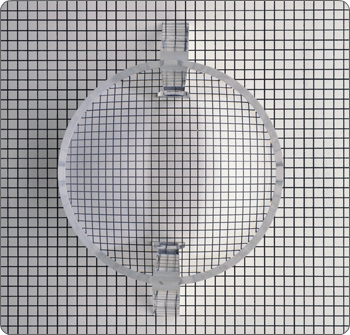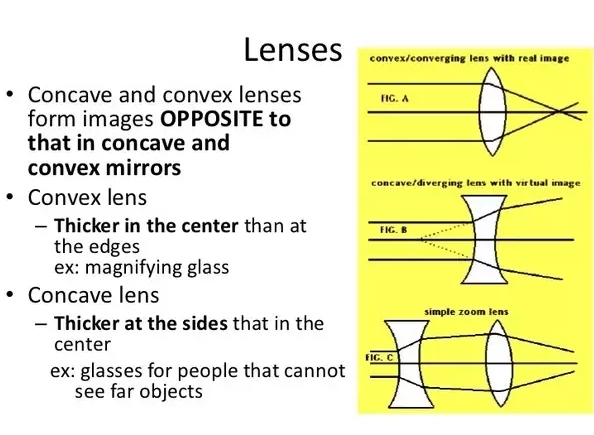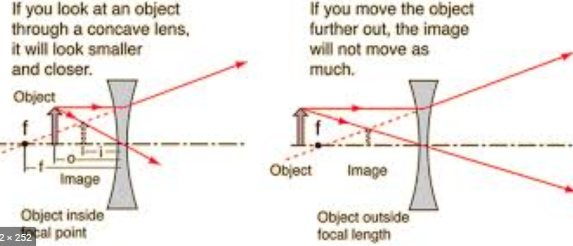What kind of lens is being used in the scene shown in this picture? a convex lens at exactly one focal length a convex lens placed closer than a focal length a concave lens a convex lens placed more than a focal length
I think its B, but i really am not sure
Optics was a weak point for me, so bear with me. Here's what I can tell from the picture. >The image is reduced >Image is between object and lens >Looks upright?? Sounds more like concave lens imo
I'm not fully sure, might need another opinion @DuarteME @barstho
Should be a concave because it does make the squares look smaller, but I haven't done this in a minute.
hmm , okay yes those are all great points! im just kind of getting thrown off with this that i found, and this lens does seem to be a magnifier
@barstho , in the image it does seem like the squares are getting smaller, so wouldnt that mean it would be convex?
found this as well
@jennylove I read that concave lens make it smaller. "Curving inward, concave lenses cause light to spread out, resulting in a smaller image for the viewer" (google)
\(\color{#0cbb34}{\text{Originally Posted by}}\) @jennylove hmm , okay yes those are all great points! im just kind of getting thrown off with this that i found, and this lens does seem to be a magnifier \(\color{#0cbb34}{\text{End of Quote}}\) Yes that picture supports the image in the question. Concave lenses are diverging lenses, so they let you see more of the object at once. Hence they lead to a virtual, reduced image.
yea, as your image says "If you look at an object through concave lens, it will look smaller and closer" which sort of looks like what's happening in your picture.
oh no! i read it wrong, it clearly says concave ! I apologize
you guys are correct! that makes sense, i was really thrown off because i was reading it wrong. Im sorry, thank you !
What made me confused at first was the question writer's idea to use grid paper, because then you can't tell if the image is exactly upright or not. But there are other aspects that you can use, and the big one here is that the image is virtual. Virtual images are most of the time concave. The only time a virtual image is formed by a convex lens is if the object is between 1F and the lens. However, that makes the image MAGNIFIED, not reduced. Hence this example here is a concave
No worries! Couldn't have done it w/o @justjm though. Nice work bro.
\(\color{#0cbb34}{\text{Originally Posted by}}\) @barstho No worries! Couldn't have done it w/o @justjm though. Nice work bro. \(\color{#0cbb34}{\text{End of Quote}}\) You too bruh (:
oh okay! That makes a lot more sense, thank you for clarifying that. I as well im not sure why they did but for it to be concave would be the best option. Thank you guys again!
Join our real-time social learning platform and learn together with your friends!



